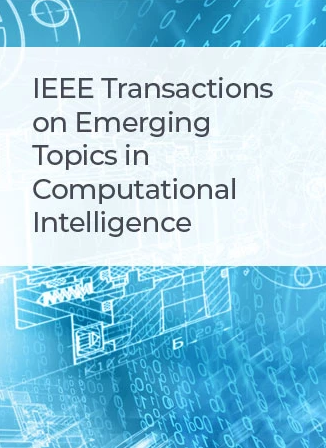用于图像修复的全局自注意力记忆神经网络
IF 5.3
3区 计算机科学
Q1 COMPUTER SCIENCE, ARTIFICIAL INTELLIGENCE
IEEE Transactions on Emerging Topics in Computational Intelligence
Pub Date : 2024-03-14
DOI:10.1109/TETCI.2024.3369447
引用次数: 0
摘要
最近,针对卷积神经网络(CNN)的局限性,人们利用非局部运算的思想,提出了各种非局部网络和视觉变换器来模拟远距离像素依赖关系。然而,这些模型大多不能自适应地处理不同分辨率的图像,而且参数数量多、计算复杂,不利于边缘设备的使用。在本文中,我们提出了一种用于图像复原的高效全局自适应记忆神经网络(GSA-MNN),并介绍了 GSA-MNN 的记忆电路实现方案。GSA-MNN 既能从图像中提取全局信息,也能提取局部信息,可灵活应用于不同分辨率的图像。具体来说,全局空间注意模块(GSAM)和全局通道注意模块(GCAM)的设计是为了完成全局关系的建模和推理。GSAM 用于对特征图像素之间的全局空间关系进行建模,而 GCAM 则用于探索各通道之间的全局关系。此外,我们还提出了多尺度局部信息提取模块,以处理具有复杂纹理的图像区域。此外,我们还为这三个模块和整个 GSA-MNN 提供了模块化设计的电路实现方案。利用忆阻器横梁的可编程性,通过调整配置参数,在同一电路框架上实现了三种图像复原任务:图像去毛刺、弱光图像增强和图像去光斑。在 10 个公开数据集上与 20 多种最先进的方法进行的实验比较表明,我们提出的 GSA-MNN 具有优越性。本文章由计算机程序翻译,如有差异,请以英文原文为准。
A Global Self-Attention Memristive Neural Network for Image Restoration
Recently, using the idea of non-local operations, various non-local networks and the Vision Transformer have been proposed to model the long-range pixel dependencies, addressing the limitation of Convolutional neural networks(CNNs). However, most of these models cannot adaptively process images with different resolutions, and their large number of parameters and computational complexity make them unfavorable for edge devices. In this paper, we propose an efficient Global Self-Attention Memristive Neural Network (GSA-MNN) for image restoration and present a memristive circuits implementation scheme for GSA-MNN. GSA-MNN can both extract global and local information from images, which can be flexibly applied to different resolution images. Specifically, the Global Spatial Attention Module (GSAM) and the Global Channel Attention Module (GCAM) are designed to complete the modeling and inference of global relations. The GSAM is used to model global spatial relations between the pixels of the feature maps, while the GCAM explores global relations across the channels. Moreover, a multi-scale local information extraction module is proposed to deal with image regions with complex textures. Furthermore, we provide a modular designed circuit implementation scheme for these three modules and the entire GSA-MNN. Benefiting from the programmability of the memristor crossbars, three kinds of image restoration tasks: image deraining, low-light image enhancement, and image dehazing are realized on the same circuit framework by adjusting the configuration parameters. Experimental comparisons with over 20 state-of-the-art methods on 10 public datasets show that our proposed GSA-MNN has superiority.
求助全文
通过发布文献求助,成功后即可免费获取论文全文。
去求助
来源期刊

IEEE Transactions on Emerging Topics in Computational Intelligence
Mathematics-Control and Optimization
CiteScore
10.30
自引率
7.50%
发文量
147
期刊介绍:
The IEEE Transactions on Emerging Topics in Computational Intelligence (TETCI) publishes original articles on emerging aspects of computational intelligence, including theory, applications, and surveys.
TETCI is an electronics only publication. TETCI publishes six issues per year.
Authors are encouraged to submit manuscripts in any emerging topic in computational intelligence, especially nature-inspired computing topics not covered by other IEEE Computational Intelligence Society journals. A few such illustrative examples are glial cell networks, computational neuroscience, Brain Computer Interface, ambient intelligence, non-fuzzy computing with words, artificial life, cultural learning, artificial endocrine networks, social reasoning, artificial hormone networks, computational intelligence for the IoT and Smart-X technologies.
 求助内容:
求助内容: 应助结果提醒方式:
应助结果提醒方式:


